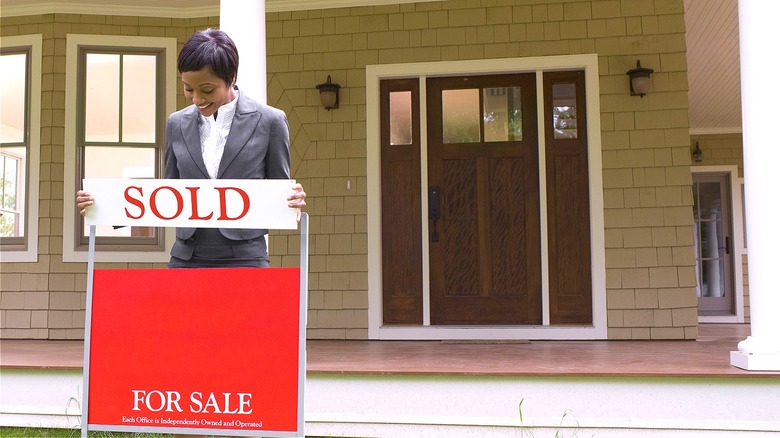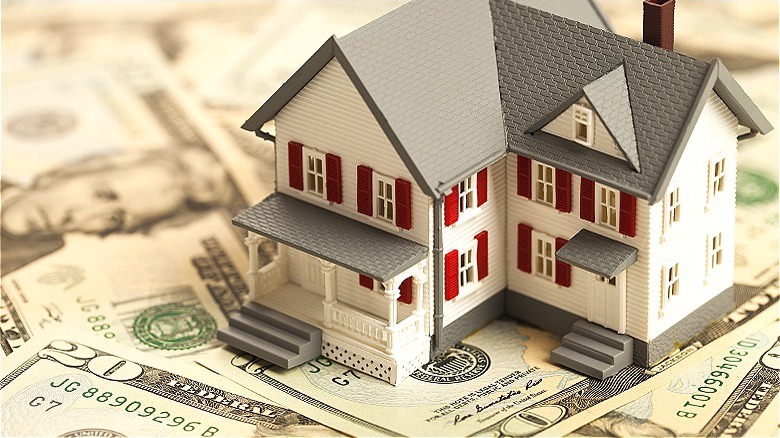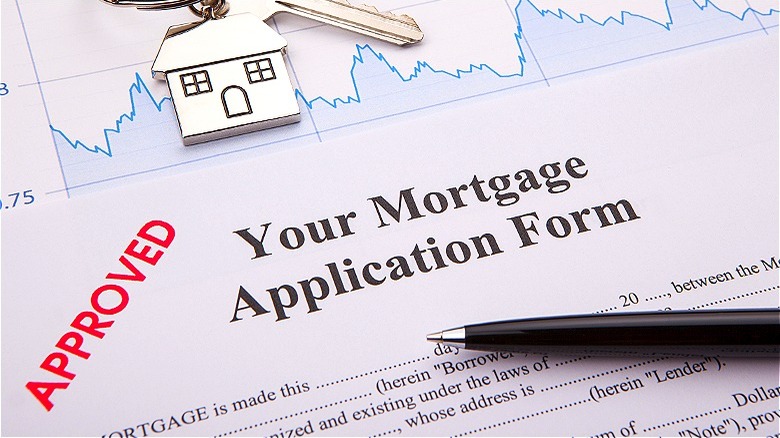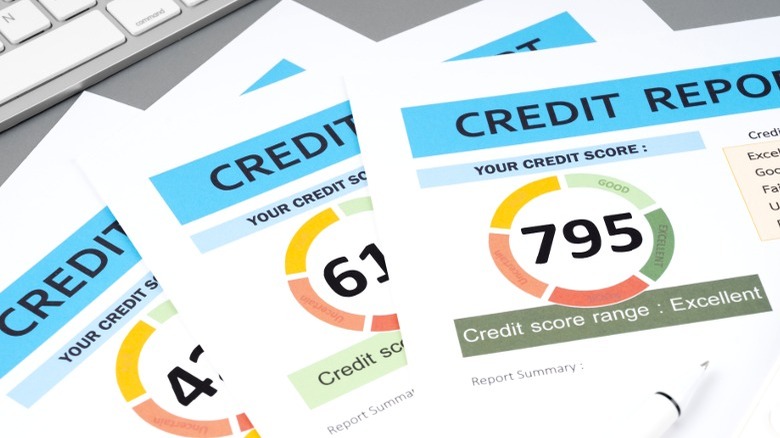The Most Popular Myths About Buying A Home
Homebuying is a mercurial sport. Hopeful homeowners line up to explore real estate in their target area and sometimes have to fend off a full slate of competitors just to get the opportunity to own a total fixer-upper! No matter where you fall in the homebuying space — whether it's your first time or tenth — there are plenty of hurdles to combat when searching for your next place to live. Perhaps chief among these hurdles to buying a home are the myths that people still take stock in, even some of the most debunked misconceptions out there like the hard-and-fast 20% down-payment figure.
These myths can stymie a buyer's efforts to find a great new property, as these tidbits of "common knowledge" play an outsized role in the thought processes of those hoping to find themselves on the move, and that can severely impact the decision-making process. Understanding the actual realities surrounding these features of the home marketplace and getting your plan in order can set you on a path toward a positive home search. At the beginning of your voyage into homeownership or near its end (e.g., baby boomers seeking to downsize), getting these real estate myths about buying a home out of your mind is a crucial step in the right direction.
Myth 1: Buying a home beings with 'just looking'
People gearing up to buy a home often fall into the habit of casually looking before they get serious about their search. This is an activity that home seekers have engaged in for years, but it's actually a detrimental choice that can derail the search for your next place to live. While it's a good idea to get a sense for the kinds of properties that will work for your specific needs, placing this step ahead of a few key financial preparations can leave you worse off than you started. Instead, the first step in any home search should revolve around budgeting and mortgage research. Once you know what you can afford, then you should begin hunting around for properties.
Casually looking at homes on the market is an excellent way to create an unrealistic expectation surrounding the homebuying process. Most people want a combination of features that simply won't fit their budget without some compromise. A big yard, space for a home office or entertainment room, and a decked-out kitchen don't come cheap, and a home that features all these enhancements is a hot commodity that will likely make a killing for its seller. Coming to grips with your budget and applying for mortgage preapproval (something that first-time homebuyers often get wrong) will put you in a great position for the home search. Not only do these steps help keep your expectations grounded, but they signal to real estate agents that you're serious about purchasing a home and can move you to the front of the line when negotiations begin.
Myth 2: A 20% down payment is the gold standard
In times past, a 20% down payment was the standard requirement when purchasing a new home. However, buyers today aren't hindered by the need to save for this lofty percentage of home equity. This said, the 20% mark remains a stretch goal for homebuyers. If you're able to afford 20%, you can eliminate the addition of PMI contributions from your monthly repayment figure. Private mortgage insurance does not provide you as the buyer with any benefit and only stands to give your lender security in the event you stop making payments. Therefore, reaching this threshold is a big milestone because it hacks off this additional payment obligation and frees up capital for you to use toward your own benefit.
However, a wide range of mortgage products exist in the financial marketplace today. The average down payment is actually less than half of this historically significant figure for first-time buyers and slightly lower for existing homeowners, standing at 6% and 17%, respectively. Of course, the more money you're able to contribute upfront the less you'll have to borrow to complete the purchase. This translates into lower monthly payments and a smaller overall bill when factoring in interest rates. With such a wide breadth of options available, there's no single correct way to approach making a down payment.
Myth 3: Repayment timelines are set in stone
A bit of a combination myth, many homebuyers believe that mortgage terms are set in stone, and therefore the 30-year mortgage is the best and only option that buyers should consider. Since 2014 — when the ability-to-repay (ATR) provision of the 2010 Dodd-Frank Act went into effect — penalties for paying off a mortgage early have been essentially done away with after the first three years. This means you can overpay on your mortgage as much as you want to reduce the cost of interest and become mortgage free faster. Financial experts like Dave Ramsey are extreme proponents of this particular strategy. (See our overview of Ramsey's money management plan 7 Baby Steps.)
Likewise, there are plenty of mortgage repayment terms available today to buyers, and no two buyers will be identical in the selection that best benefits them. For some, a lengthy mortgage repayment timeline creates more buying power through lower monthly payments on the same principal value. Alternatively, a longer mortgage term allows for more flexibility in overpayment because of this reduction in scheduled contribution figures. However, if you aren't likely to find the room for overpayments and still want to reduce your interest expenses, a shorter loan term is your best bet. As with many features of the homebuying marketplace, there is no optimal path that characterizes shoppers as a whole.
Myth 4: A good credit score is needed to buy a home
Another homebuying myth concerns a person's credit history. Credit history goes a long way to determining the structure a home loan might take, but those with average or even poor credit scores can still qualify for financing opportunities. For a typical mortgage, buyers will want to take steps that ensure their credit score rises above 620 and remains there. Similarly, paying off debts in order to reduce monthly payment figures will raise the available budgetary room that can be dedicated to mortgage maintenance. With these steps taken months or even years leading up to a home purchase, lenders may be more amenable in terms of interest rates and total financing figures offered.
However, FHA loans and many other options exist for homebuyers with less available savings and lower credit scores. FHA loans require a 3.5% down payment, making homeownership affordable for a massively wider cross-section of the American public. Regardless of how you get into your own home, there will always be challenges and commitments that test you financially and mentally. But homeownership isn't restricted to only those with robust savings accounts and great credit scores.
Myth 5: It's cheaper to own (or rent) than the alternative
This is a pair of homebuying myths that end up getting thrown around in conversation a lot. Often, they butt heads with one another in a back and forth that ends up getting nowhere. This is because both statements are myths. There's truly no correct way to address the property market that acts as a one-size-fits all solution. Renting may be the best approach for some people's lifestyle and finances, and buying is the perfect choice for others. Even so, there's a host of individuals who fall somewhere in the middle and have to contend with the pros and cons of both options to delineate the more appropriate pathway forward.
Renting a home eliminates much of the upkeep and maintenance responsibilities for the tenant. If a window breaks, an appliance fails, or a couch becomes old and worn, the financial toll is passed on to the landlord. As well, many renters find that the monthly cost is lower than they might be facing if they were to buy a home instead, although this is certainly not a given. On the flip side, homeowners are actively building equity in a wealth-generating asset. Real estate is a huge passive income creator for many people, too — those who inherit a home or purchase a second property to become landlords. However, the financial toll of homeownership can be substantial at times. The long and short of it is that neither solution to the need for a quality place to live is entirely "better" than the other.





